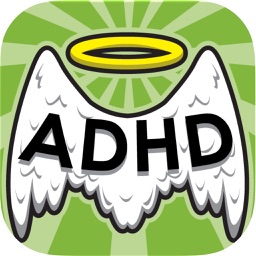
Attention Deficit Hyperactivity Disorder (ADHD) is a neurodevelopmental condition characterized by persistent patterns of inattention, hyperactivity, and impulsivity. While medication and behavioral therapies are commonly used to manage ADHD symptoms, an often overlooked but highly effective strategy is regular physical exercise. Engaging in regular physical activity can provide significant benefits for individuals with ADHD, improving not only their physical health but also their cognitive functions and emotional well-being. This article explores the multifaceted ways in which exercise can help manage ADHD symptoms and enhance overall quality of life.
1. Enhanced Executive Functioning
Executive functioning encompasses cognitive processes such as planning, organizing, and executing tasks. Individuals with ADHD often struggle with executive functioning, which can impact their academic and occupational performance. Exercise has been shown to enhance executive functioning by increasing blood flow to the brain and promoting neuroplasticity, which is the brain’s ability to reorganize itself by forming new neural connections.
Aerobic exercises, such as running, swimming, and cycling, have been particularly effective in improving executive functions. Studies have demonstrated that regular aerobic exercise can lead to improvements in attention, working memory, and cognitive flexibility. These benefits are thought to result from the increased availability of neurotransmitters like dopamine and norepinephrine, which play crucial roles in attention and focus.
2. Improved Attention and Focus
One of the hallmark symptoms of causes of ADHD is difficulty maintaining attention. Exercise can help address this challenge by increasing the availability of neurotransmitters that are essential for focus and concentration. Engaging in physical activity stimulates the release of dopamine, norepinephrine, and serotonin—neurotransmitters that are often dysregulated in individuals with ADHD.
Research has shown that even short bouts of exercise can lead to immediate improvements in attention and cognitive performance. For instance, a study published in the journal Neuropsychology Review found that a single session of moderate-intensity exercise was associated with improved attention and cognitive performance in children with ADHD. Regular physical activity can thus provide a natural and effective way to enhance attention and reduce distractibility.
3. Reduced Hyperactivity and Impulsivity
Hyperactivity and impulsivity are core symptoms of ADHD that can significantly impact daily functioning and social interactions. Exercise provides an outlet for excess energy, which can help mitigate these symptoms. Activities that require coordination and control, such as team sports or martial arts, are particularly effective in channeling hyperactive tendencies into productive actions.
A study published in the journal Pediatrics found that children with ADHD who participated in a structured physical activity program showed significant reductions in hyperactive and impulsive behaviors. Regular exercise can help individuals with ADHD learn to manage their impulses and regulate their behavior more effectively.
4. Enhanced Mood and Emotional Regulation
Individuals with ADHD are at an increased risk of developing mood disorders such as anxiety and depression. Exercise has been shown to have a positive impact on mood and emotional regulation, making it a valuable tool for managing these comorbid conditions. Physical activity stimulates the release of endorphins, which are natural mood enhancers, and helps regulate stress hormones like cortisol.
Regular exercise can also improve self-esteem and self-efficacy, which are often compromised in individuals with ADHD. By setting and achieving fitness goals, individuals with ADHD can experience a sense of accomplishment and increased confidence, which can translate into improved emotional well-being.
5. Improved Sleep Patterns
Sleep disturbances are common among individuals with ADHD and can exacerbate symptoms of inattention and hyperactivity. Exercise has been shown to improve sleep quality and regulate sleep patterns. Physical activity promotes the production of melatonin, a hormone that regulates sleep-wake cycles, and can help individuals fall asleep more easily and experience deeper, more restorative sleep.
A study published in the Journal of Clinical Sleep Medicine found that children with ADHD who engaged in regular physical activity experienced improvements in sleep duration and quality. By incorporating exercise into their daily routine, individuals with ADHD can enhance their sleep hygiene and reduce the impact of sleep disturbances on their symptoms.
6. Social Benefits
Participating in group sports or exercise classes can provide social benefits for individuals with ADHD. These activities offer opportunities for social interaction, teamwork, and skill development. Building positive social relationships and learning to work collaboratively can improve social skills and reduce feelings of isolation, which are common among individuals with ADHD.
Additionally, the structure and routine provided by regular exercise can create a sense of stability and predictability, which can be particularly beneficial for individuals with ADHD who may struggle with organizational challenges. The social and structured nature of group exercise settings can help individuals with Symptoms of ADHD develop important social and organizational skills.
7. Developing Healthy Habits
Incorporating exercise into a daily routine can help individuals with ADHD develop healthy habits and a structured lifestyle. Regular physical activity encourages the establishment of routines and time management skills, which can be beneficial for managing ADHD symptoms. By integrating exercise into their daily schedules, individuals with ADHD can create a sense of order and routine that supports their overall well-being.
Conclusion
Exercise offers a range of benefits for managing ADHD symptoms, from improving executive functioning and attention to reducing hyperactivity and impulsivity. By enhancing mood, regulating sleep, and providing social and organizational benefits, physical activity can play a crucial role in managing ADHD and improving overall quality of life. For individuals with ADHD, incorporating regular exercise into their daily routine can be a valuable and effective strategy for symptom management and personal growth. As with any intervention, it is important to tailor exercise programs to individual needs and preferences, ensuring that physical activity becomes a sustainable and enjoyable part of daily life.